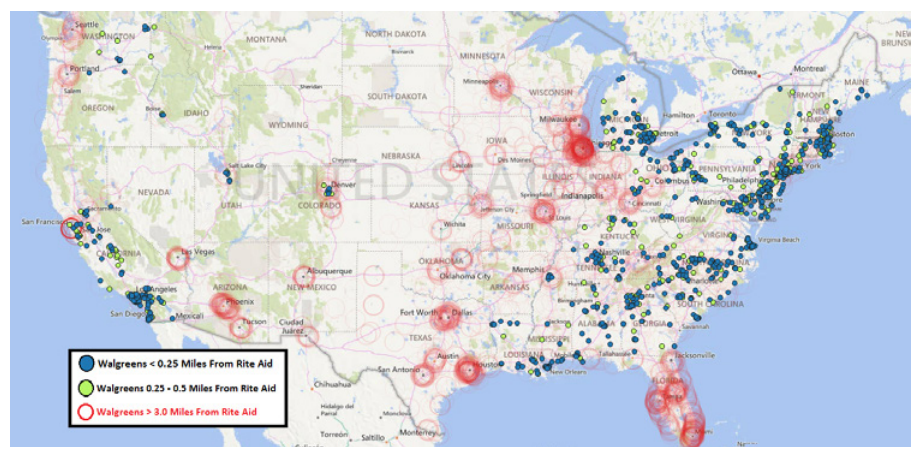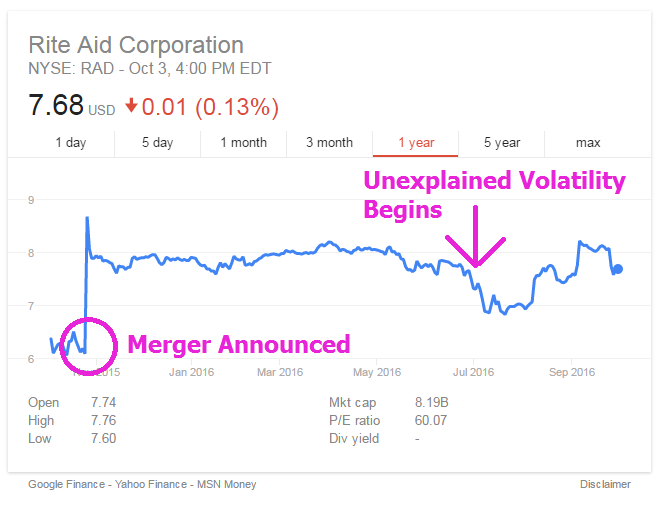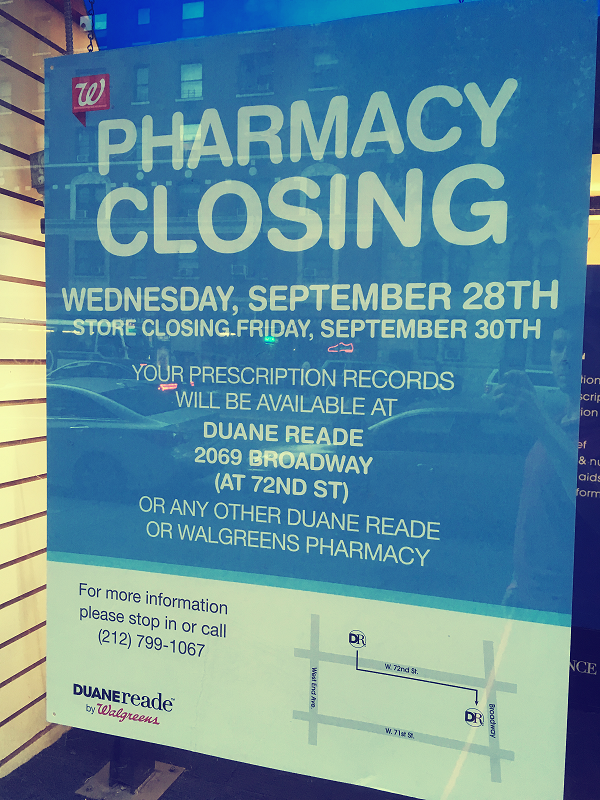Article
Walgreens-Rite Aid Deal Could Close Soon: Implications for Pharmacists and Patients
Two of the biggest players in the retail pharmacy market are expected to merge this year. What does that mean for patients, pharmacists, and investors?
As pharmacists and Wall Street analysts alike already know, Walgreens announced plans to acquire Rite Aid last October, and the deal is expected to close by the end of this year. At the time, Walgreens expected to divest up to 500 stores in order to address antitrust concerns and consummate the deal, but as of September 8, 2016, Walgreens has increased this estimate to as many as 1000 stores. Although this revision is significant, it would still leave Walgreens with the greatest number of US retail pharmacy stores (11,700 versus CVS’s 9600). With that in mind, let’s take a closer look at some of the most impactful areas of the acquisition and what it could mean for Walgreens and Rite Aid pharmacists.
Pharmacist Employment
Rite Aid currently operates over 4500 stores across 31 states, while Walgreens operates 8200 across all 50 states. Even if Walgreens sheds up to 1000 stores, the merger would still leave Walgreens owning close to 20% of all US retail pharmacy outlets (with an estimated 35% patient market share). Although we don’t have formal details about the stores being divested, they’ll likely come from markets where Walgreens and Rite Aid currently neighbor one another.
Here’s an interesting look at this:

Source: Rashid H. Walgreens & Rite Aid merger analysis. http://calkain.com/reports/research/calkain_research126.pdf. 2016.
My guess is divestitures will likely be in cities where Rite Aid market share is highest relative to CVS and Walgreens, including Baltimore, Pittsburgh, Seattle, Philadelphia, Los Angeles, and several New York locations.
A big implication of store divestitures is a number of both Walgreens and Rite Aid pharmacists stand to lose their positions, as stores divested will be a mix of both companies’ stores. Assuming each location employs between 2 and 4 pharmacists full-time, up to 3000 Rite Aid and Walgreens pharmacists may lose their jobs as a result of the acquisition. I argue that more Rite Aid stores will be divested, since Walgreens stores are more profitable (net income per retail location is much higher per Walgreens store, and Rite Aid has a greater percentage of pharmacy sales than Walgreens; pharmacy sales are usually lower margin than nonpharmacy sales).
Branding
Rite Aid patients may be concerned that the brands their local Rite Aids carry, and even the logo and store design itself, may change or be discontinued. As of now, it isn’t clear when Rite Aid will change its logo or its branding and supply chain decisions. Walgreens has emphasized its intentions on expanding its exclusive global beauty brands (eg, No. 7, Soap & Glory), but a timeline is unknown.
Rite Aid currently sources its generic drugs through McKesson and has a contract in place through March 2019, so for the near future, tablet sizes and colors and staff workflows will remain the same. On the other hand, AmerisourceBergen is Walgreens’ wholesaler of choice, and it’s expected that merged Rite Aid stores will shift their purchases from McKesson to Amerisource when feasible.
Potential Buyers
As for the divested stores themselves, it’s unknown who the potential buyer(s) are. In late August 2016, Bloomberg reported that Kroger had emerged as a potential buyer for some of the divested stores. In 2015, Kroger earned $9.8 billion in prescription revenues (7th among all pharmacy prescription revenues) and reportedly operate nearly 2000 retail pharmacies. Acquisitions are posited to further Kroger’s strategy in urban markets (indeed, Kroger operates 784 convenience stores and 323 fine jewelry stores).
CVS has also been rumored to have interest in divested stores to gain access to markets where it doesn’t currently compete.
Stock Activity
The most interesting element of this deal comes from Rite Aid stock activity. Specifically, Walgreens has agreed to pay shareholders $9.00 per share upon consummation of the deal. However, Rite Aid stock is currently trading for as low as $7.60 per share. This large spread earns willing investors 16% returns, if the deal is approved by the Federal Trade Commission (FTC). Indeed, Rite Aid stock volatility has increased since May 2016, and it’s not clear why.

Credit Suisse published an analysis last year that uses the Rite Aid acquisition of Brooks/Eckerd in 2007 as a baseline. At the time, the FTC required Rite Aid to divest a total of 24 stores in markets where pharmaceutical sales to cash customers were >50% of the entire market. In that same analysis, even if the FTC were to set the bar at 40%, Walgreens/Rite Aid would be required to divest 947 stores in total, which Walgreens has said it’s willing to do. No substantively new information has come to light regarding approval or denial of the merger, yet some investors are trading the stock as if the deal’s in doubt.
All things considered, this deal is expected to be completed soon, but its implications in terms of pharmacist employment, store divestitures, and retail pharmacy competition are highly uncertain. I’m excited for Walgreens and Rite Aid patients and stakeholders, but cautious about the technicians and pharmacists staffing to-be-divested stores, as it’s unclear where they’ll ultimately end up.






